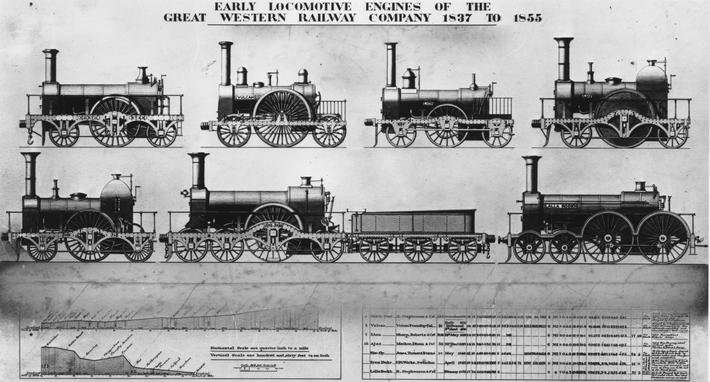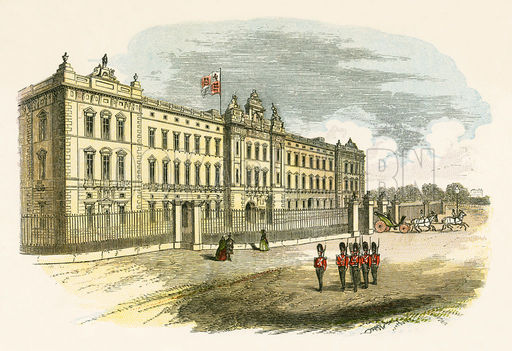Steam Engine, improved by James Watt (which consumes less coal, being more efficient), has represented a turning point in the evolution of human society, with an impact equivalent to the adoption of agriculture by our hunters and gatherers ancestors. The steam engine replaced much of human’s brute force, replaced much of the brute force of man’s aid, the horse, and allowed the creation of goods by machines, triggering the Industrial Revolution.
The steam engine is an external combustion engine that produces mechanical work using the thermal energy of the steam. The steam is produced under pressure in a steam generator by boiling, being expanded in a cylinder aggregate in which the steam pressure produces mechanical work by linearly moving a piston, movement which, most of the times, is converted into a rotary motion by a crank mechanism. The heat required to produce steam is produced by combustion of a fuel or nuclear fission.
The history of the steam engine begins in the first century BC, when the Greek mathematician Hero of Alexandria described eolipila, the first rudimentary steam engine. In the following centuries, the few known steam engines were only experimental devices, used by inventors to demonstrate the properties of steam, just like the eolipila. A rudimentary steam turbine was described by Taqi al-Din in 1551 and Giovanni Branca in 1629.
Jeronimo of Ayanz y Beaumont received in 1606 patents for 50 steam-powered inventions, including a pump for draining of flooded mines. Denis Papin, a Huguenot refugee, has realised useful works on the steam digester, in 1679, and used for the first time, in 1690, a piston to lift weights.
The first commercial steam-powered device was a water pump developed by Thomas Savery in 1698. He used a vacuum system to lift water from the ground, then used the steam pressure to raise it even higher. Small motors were effective, but larger models were problematic, proving that they had limited height lifting and being prone to boiler explosions. They have been used in several mines, drilling stations and to power water wheels used in textile machines. An attractive property of Savery’s engine was low cost. Savery pumps continued to be produced until the late eighteenth century, such an engine still being operational in 1820.
The first successful commercial engine, in that it could generate a power and transmitting it to a car, was the atmospheric engine, invented by Thomas Newcomen around 1712.
The inventor used the technologies discovered by Savery and Papin, but his engine was somewhat inefficient, and in many cases has only been used for pumping water. The engine operating by creating a partial vacuum by the condensation of steam under a piston in a cylinder. It was used to drain water from mines at depths that until then were impossible; it was also used in water supply in order to power water wheels from factories, and the water passing the wheel reached a tank from where had been resuming its cycle.
In 1720, Jacob Leupold described a high-pressure-two-cylinder steam engine. The invention was published in his work, “Theatri Machinarum Hydraulicarum”. The engine was using two lead pistons which provided a continuous movement to a water pump. Each piston was rised by the steam pressure and was returning to its original position by gravity. The two pistons were using a common rotary valve connected directly to a steam boiler.
The next major step came when James Watt developed (between 1763-1775) an improved version of Newcomen’s engine, adding a separate capacitor.
Boulton and Watt’s first engines used half as much coal as John Smeaton’s improved version. Watt continued to improve the engine, modifying it to provide a suitable rotary motion to power factory machineries. This allowed the factories to be built away from rivers and accelerated the pace of the Industrial Revolution.
Around 1800, Richard Trevithick and, independently, Oliver Evans in 1801, introduced engines using high pressure steam. Trevithick obtained his engine patent in 1802. These engines were much stronger than previous cylinder engines could be made small enough for transport applications. Since then, technological developments and improvements in manufacturing techniques resulted in the design of more efficient engines that could be smaller, faster or stronger, depending on the intended application.
The steam engine became widespread before the invention of the electric motor or internal combustion engine, being used in various applications: in factories, construction, transport (steam locomotives), in marine transport (ships’ engines) and electricity generation (most of today’s electricity is produced by steam turbines).
Although steam engines are not as widespread for commercial use, some companies are still exploiting and exploring the potential of such an engine, as an alternative to internal combustion engines. The Swedish company Energiprojekt AB made progress in using modern materials for harnessing the power of steam. The efficiency of Energiprojekt’s steam engine exceeded by 27-30% the efficiency of high-pressure engines. The Swedish engine is a five-cylinder engine with superheated steam and consumes approx. 4 kg of steam / kWh.








